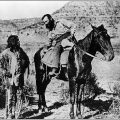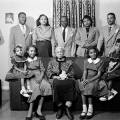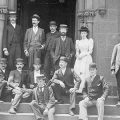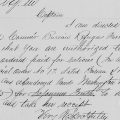Today in Smithsonian History: March 3, 1879

This is part of a series of pictures depicting anthropologist Frances Densmore at the Smithsonian Institution in 1916 during a recording session with Blackfoot chief Mountain Chief for the Bureau of American Ethnology. This image of Densmore and Mountain Chief listening to a cylinder recording has become a symbol of the early songcatcher era. (Image via Library of Congress, PD US Gov)
March 3, 1879 The United States Congress appropriates $20,000 for the publication of Contributions to North American Ethnology, provided that “all the archives, records, and materials relating to the Indians of North America, collected by the Geographical and Geological Survey of the Rocky Mountain Region, shall be turned over to the Smithsonian Institution, that the work may be completed and prepared for publication under its direction.”
Following the Civil War, there were four national survey leaders. One was geologist and western explorer John Wesley Powell, who led expeditions and conducted surveys of the American West. In 1869 he set out by boat to explore the Colorado River from the Green River, Wyoming Territory, to the foot of the Grand Canyon. When Congress created the Bureau of Ethnology in 1879, Powell was named its first director (1879-1902), a post he held until his death.
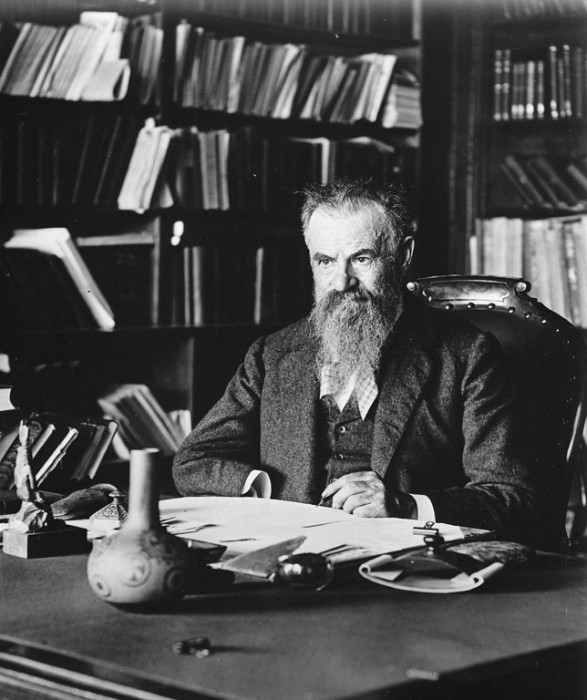
Major John Wesley Powell (1834-1902) seated at his desk in his office in the Adams Building on F Street in Washington, D.C. Following the Civil War, there were four national survey leaders. One was geologist and western explorer Powell, who led expeditions and conducted surveys of the American West. In 1869 he set out by boat to explore the Colorado River from the Green River, Wyoming Territory, to the foot of the Grand Canyon. When Congress created the Bureau of Ethnology in 1879, Powell was named its first director (1879-1902), a post he held until his death. Placed under the auspices of the Smithsonian Institution, the bureau, whose name was changed to the Bureau of American Ethnology, was to be the repository of the “archives, records, and material relating to the Indians of North America, collected by the geographical and geological survey of the Rocky Mountains” (Photo by Sawyer [?], ca. 1890s. Via Smithsonian Institution Archives.)
Posted: 3 March 2019
- Categories:
